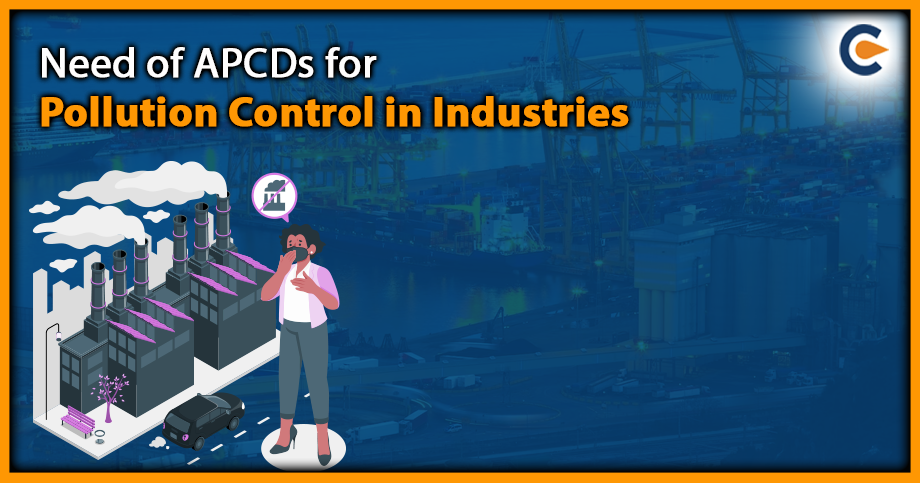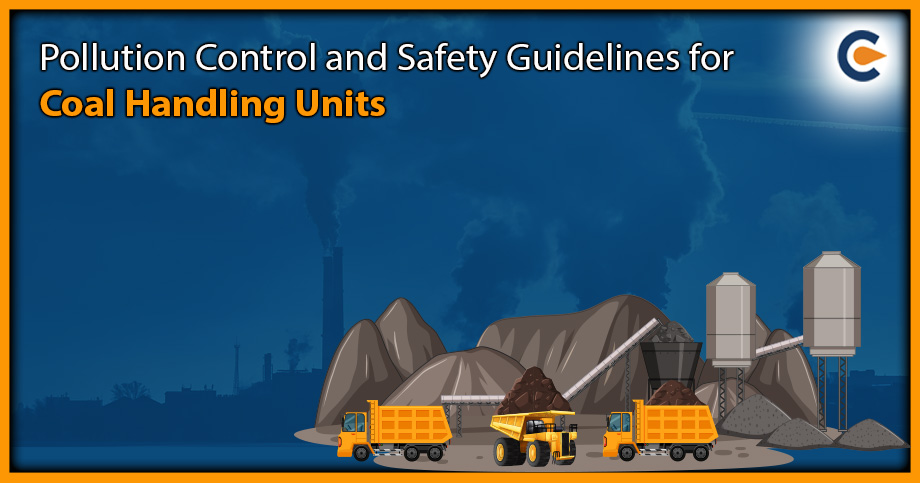Air pollution control devices, APCDs for Pollution Control, are tools designed to prevent various types of pollutants, including solid and gaseous ones, from being released into the atmosphere, mainly through industrial smokestacks. These devices can be broadly categorised into two groups: those that manage the quantity of particulate matter that enters the environment and those that control acidic gas emissions. The techniques used to eliminate each type of pollutant may differ, and only the primary methods are discussed. Despite their complexity, these devices have been proven to be effective, and the overall emission levels of many pollutants have decreased with the implementation of these control devices.
Regulations Governing Pollution Control through APCDs
The regulations governing various pollution control efforts are as follows:
- The Air Act, 1981[1] – This act empowers the Central Pollution Control Board (CPCB) & the concerned State Pollution Control Boards (SPCBs) to regulate and enforce pollution control measures in industrial establishments and projects. The Pollution NOC (CTE and CTO) requires the installation and operation of APCDs periodically in critically and severely polluted areas.
- The Environmental Impact Assessment (EIA) Notification, 2006 – This notification makes it mandatory for industries to obtain environmental clearance from the MoEFCC (Ministry of Environment, Forest, and Climate Change) before setting up new facilities or expanding existing ones. It requires industries to install appropriate APCDs for Pollution Control.
- The Hazardous Waste Management Rules, 2016 – Industries generating hazardous air emissions must install APCDs to control air emissions from their facilities to prevent the release of hazardous pollutants into the air.
Methods Used in APCDs for Pollution Control
Particulate matter can be removed from flue gases using physical means of separation, such as electrostatic precipitators, cyclone separators, fabric filters, etc. The methods used in APCDs for pollution control are as follows:
| APCD | Description | Application |
| Electrostatic Precipitator (ESP) | Uses static electricity to remove particulate matter (e.g. soot, ash) from exhaust fumes before they exit smokestacks. | Effectively controls particulate emissions from coal-fired power plants, cement factories, and other industrial processes. |
| Cyclone Separator | Separation devise that uses inertia to remove particulate matter from flue gases. Dirty flue gas enters a chamber containing a vortex, and the difference in inertia between gas particles and larger particulate matter causes the particles to be separated. | Effective in controlling particulate emissions from biomass combustion, wood processing, and other industrial processes. |
| Fabric Filter (FF) | Also known as a baghouse filter, it is a device that removes particulate matter from flue gas by using a fabric material. Flue gases pass through the fabric, and dust particles are trapped on the cloth. | Effectively controls particulate emissions from coal-fired power plants, cement factories, and other industrial processes. |
| Wet Scrubber | It uses a liquid to remove acid gases (e.g. SO2) and particulate matter from industrial exhaust gases. | Effective in controlling SO2 emissions from coal-fired power plants, smelters, and other industrial processes. |
| Dry Scrubber | It uses an alkaline material to remove acid gases (e.g. SO2) and particulate matter from industrial exhaust gases. | Effectively controls SO2 emissions from cement factories, incinerators, and other industrial processes. |
| Selective Catalytic Reduction (SCR) | Reduces NOx emissions by converting them into nitrogen and water vapor through a catalytic reaction. | Effective in controlling NOx emissions from power plants, cement factories, and other industrial processes. |
| Carbon Capture and Storage (CCS) | Captures carbon dioxide (CO2) emissions and stores them underground, preventing them from entering the atmosphere. | Effective in controlling CO2 emissions from power plants, refineries, and other industrial processes. |
Importance of APCDs For Pollution Control in Industries
The importance of APCDs is as follows:
- Reduction of Emissions: APCDs help reduce emissions of pollutants from industrial and power generation sources, reducing the impact of these sources on air quality and public health.
- Compliance with Regulations: Many countries have rules and standards to limit the amount of pollutants released into the air. APCDs help industries comply with these regulations and avoid penalties for non-compliance.
- Protection of Public Health: Many of the pollutants released into the air have harmful effects on human health, such as respiratory problems, cancer, and heart disease. Installing APCDs for Pollution Control help reduce the concentration of these pollutants in the air, reducing the risk of these health problems.
- Protection of The Environment: Air pollution harms the environment, including damage to crops and ecosystems and acidification of water bodies. APCDs help reduce these environmental impacts by reducing the pollutants released into the air.
- Cost Savings: In many cases, installing and operating APCDs saves industries by reducing the need for expensive equipment and materials used to control emissions and reducing energy consumption and other operating costs.
- Sustainability: Many APCDs are designed to capture pollutants and convert them into valuable products, such as energy or raw materials. This helps create a more sustainable approach to industrial processes, reducing waste and environmental impact.
- Public Relations: Industries that invest in pollution control measures, including APCDs, can benefit from improved public perception and reputation. Consumers and stakeholders are increasingly concerned about the environmental impact of industrial activities, and companies that take steps to reduce their emissions can improve their standing with these groups.
Conclusion
APCDs For Pollution Control in Industries help to mitigate the environmental impact of industrial processes by removing harmful pollutants from industrial emissions before they are released into the atmosphere. APCDs have been made mandatory in maximum countries to ensure compliance with environmental regulations. The implementation of APCDs not only helps to protect the environment but also promotes sustainable industrial practices. Industries prioritising using APCDs can significantly reduce their CO2 footprint and contribute to a cleaner environment. It is recommended to obtain expert advice while conducting Environmental Assessments to obtain clearances for the project proponent and to comply with the legal requirements hassle-free.
Also Read:
List Of Industries Exempted From Obtaining NOC From Pollution Control Board











